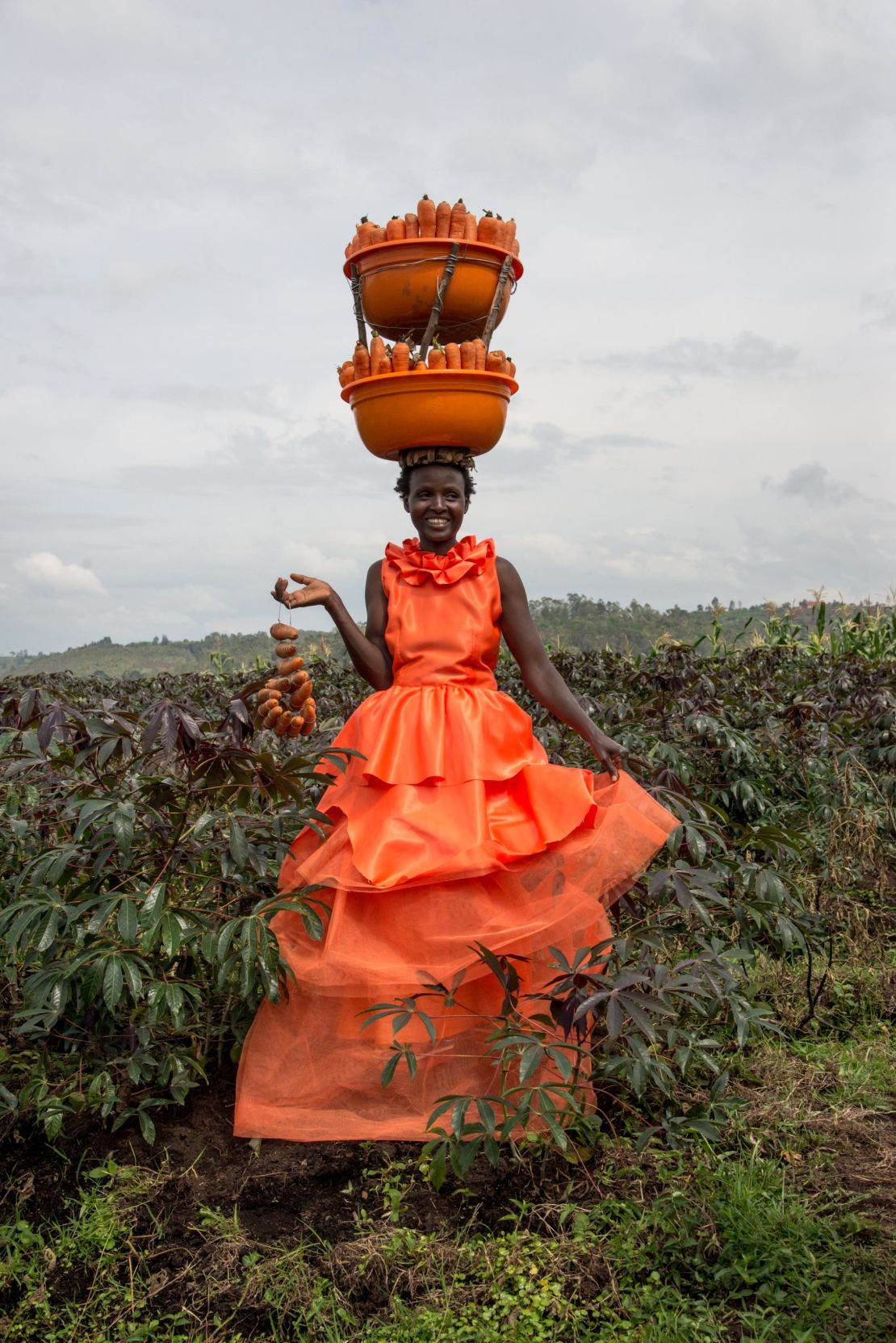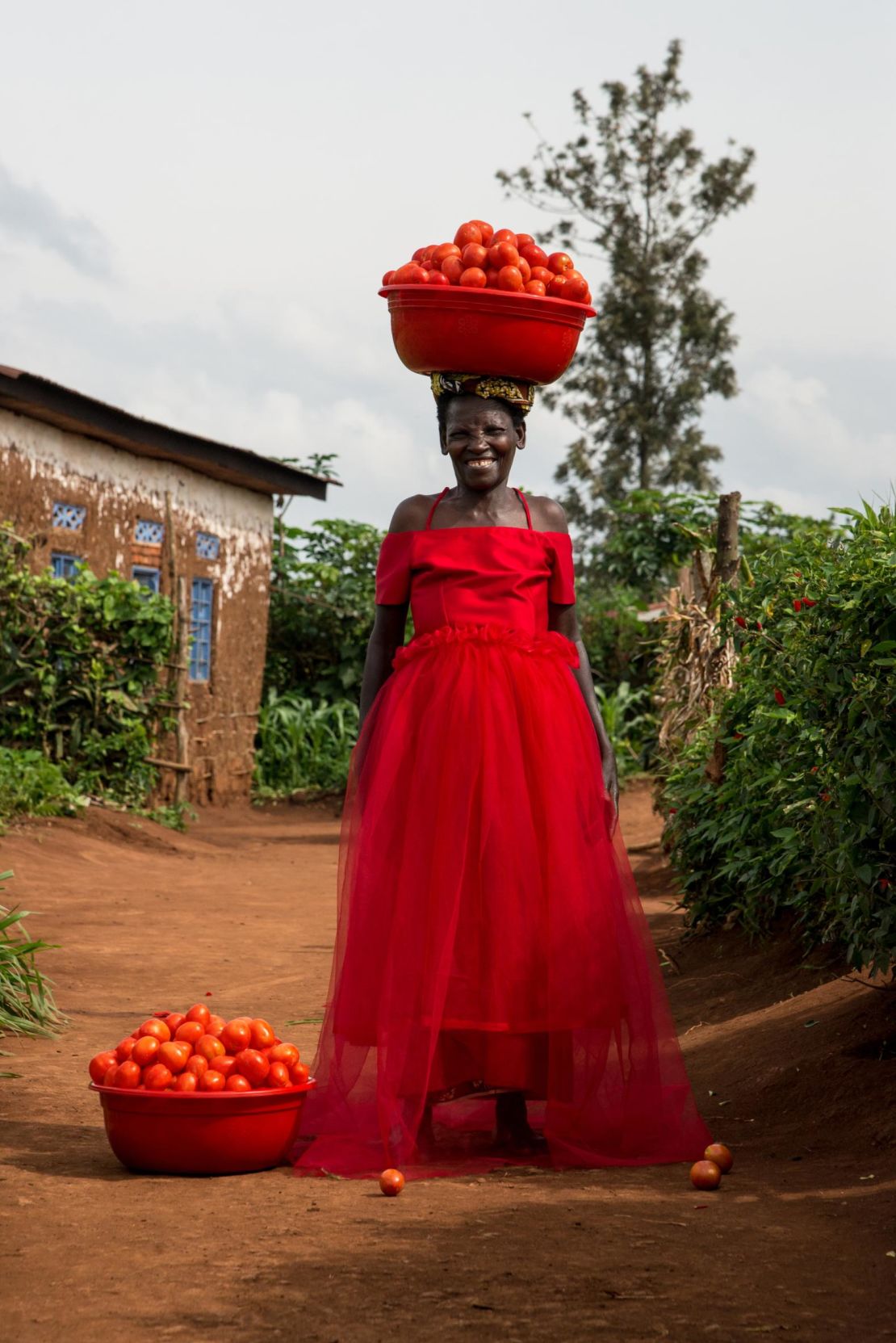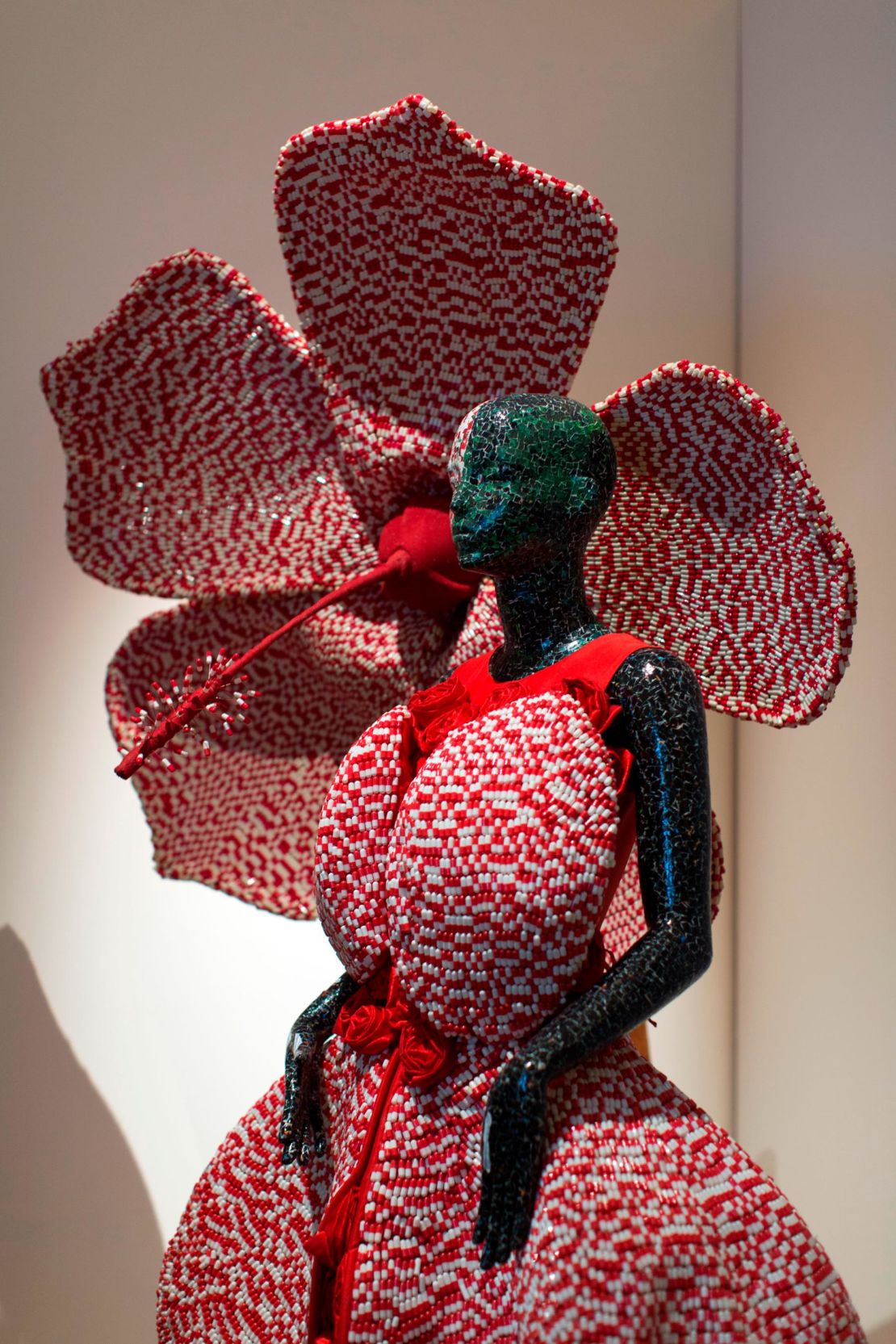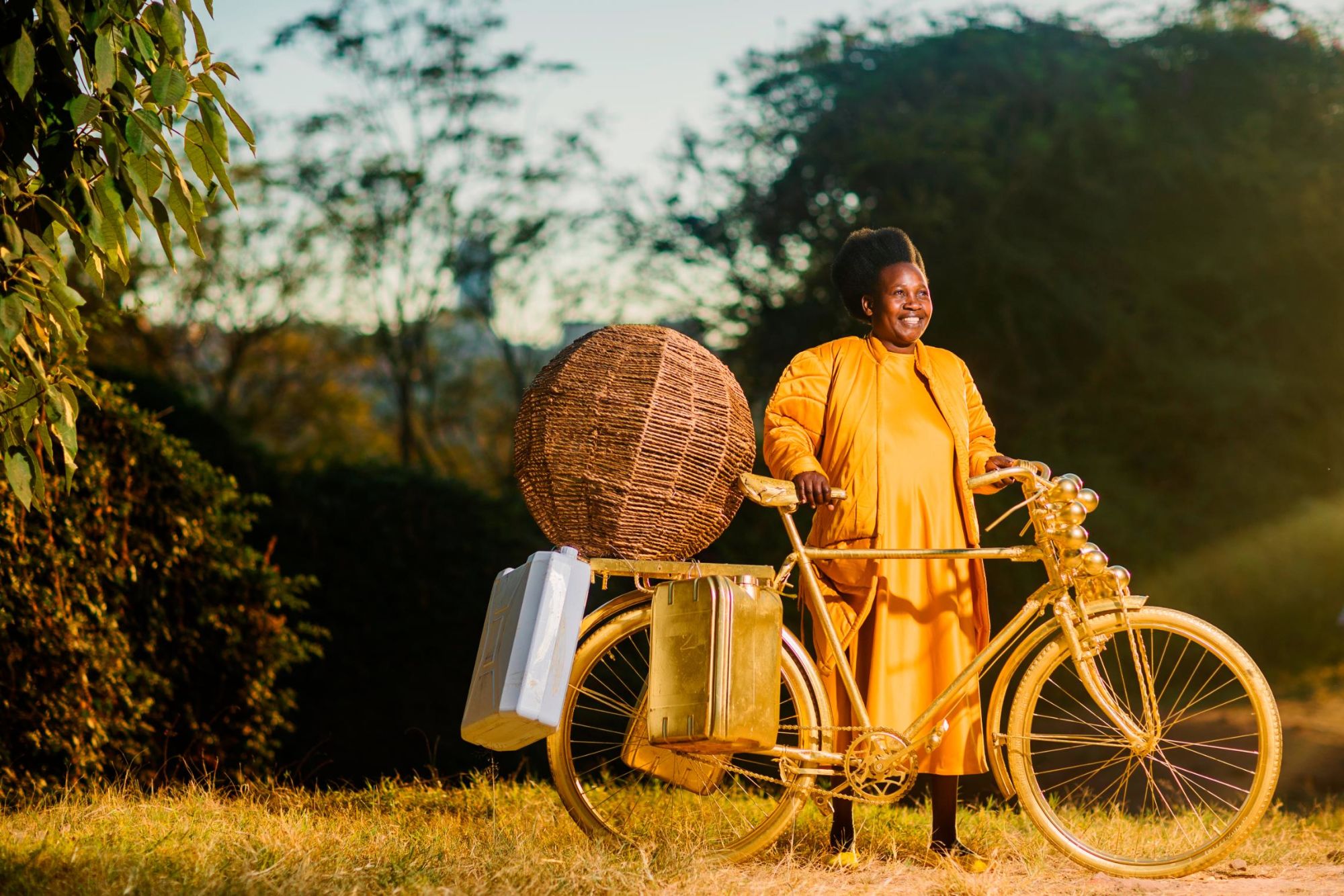Based in Kigali, Rwanda, 25-year-old fashion designer Cedric Mizero mixes local artisanal techniques with a wide range of media and disciplines, repurposing everyday objects to showcase the vibrancy of life in Rwanda’s rural areas. Mizero’s work was a highlight of this year’s International Fashion Showcase, a presentation of new design talent held during London Fashion Week. We caught up with him at Somerset House, in London.
CNN: When did you know you wanted to work in fashion, and what motivates you as a designer?
Cedric Mizero: I grew up in a small village in Rwanda called Gishoma, in the Western Province. In 2012, I moved to the capital, Kigali, and that’s where I really started to appreciate fashion. For me the goal has always been telling stories, particularly about the richness of daily life in places like Gishoma, which have generally been ignored. I turned to fashion because I realized that it would be a powerful way to do that.

With my work, I want to show that fashion is for everyone, not just for people in cities or people with money. That’s what led me to start Fashion for All (in 2014). It’s a long-term project that uses fashion in a really inclusive way to highlight the experiences of people in villages like the one where I grew up.
As part of Fashion for All, you mounted two collections, Strong Women and Beauty in the Heart. Can you tell us a bit about them?
I am one of 12 children, and my mom has always been a huge inspiration to me. To have 12 kids and always be happy, while working and taking care of us – that’s real beauty.
But when I launched Fashion for All and started photographing women in the villages, they would ask me, “Do you think I’m beautiful? What do you think people in Kigali will think?” And I realized that the way people in the villages see beauty – in terms of inner strength, and what you can give to others, to the world – is so different from the way it is generally understood.

That inspired two other projects, Strong Women (a 2017 fashion-and-mixed-media exhibition and art installation, with photographs by Chris Schwagga) and (fashion collection) Beauty in the Heart, in 2018. The idea with both was to highlight the energy and inner strength of women like the ones I knew in the villages and put them front and center and celebrate everything they do.
What kinds of materials and mediums do you use? What colors and forms are you drawn to?
I return to the butterfly shape again and again, because for me butterflies represent life; I love the idea of transformation. In terms of materials, we don’t make our own fabrics in Rwanda. We only import them, which means we don’t have access to a lot of different kinds. So I love fabrics but I’m still searching for one to call my own.
I’m self-taught; I never had a chance to go to art school. So I love working with mixed media because it is an opportunity to educate myself about different practices and grow as a designer. I’m very curious and don’t want to focus on just one thing.

What has been a career highlight to date?
Coming to the International Fashion Showcase in London this year! I’ve always wanted to be able to inspire the next generation of young artists in Rwanda, and I hope that my being invited to present internationally will motivate them to help put my country on the map, too.
How have you seen Rwandan fashion change in recent years?
There are so many designers doing amazing work with clothes in Rwanda now, like Touch of Rwanda, Moshions and Collective Rwanda (founded in 2015), it’s changing a lot and it’s an exciting time. I think the future of fashion in Rwanda is really in the hands of young people who are trying to change things.

What’s next for you?
I love the idea of experimenting with performance, so my next project will involve theater in some way. I want to do a fashion show in a village, but have it be a play. I would love to work with filmmakers and producers one day, too.
This interview has been condensed and edited for clarity.



